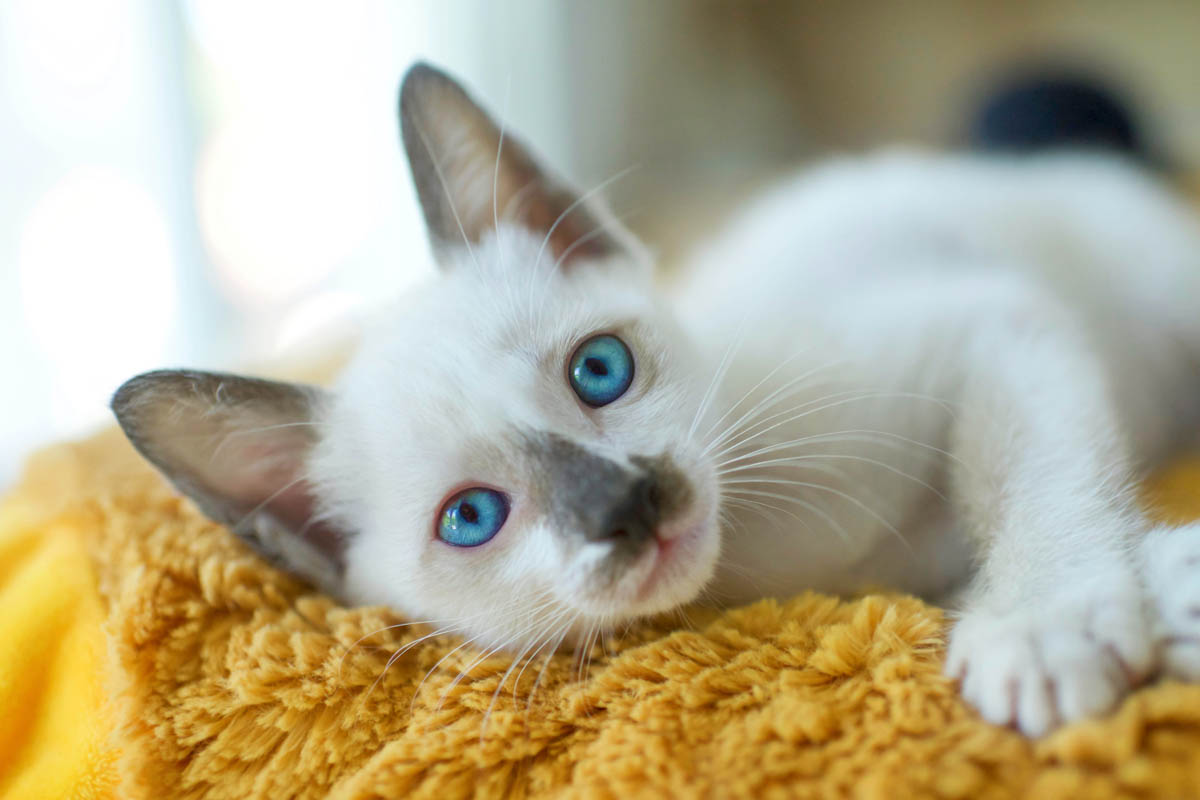Why do kittens have blue eyes?
Kittens are born with blue eyes because the melanin, which gives colour to the iris, is not present at birth. Once the eyelids open and the eyes are exposed to light, melanin production increases, causing their eye colour to darken. The final eye colour may not be determined until 6 to 18 months after birth. This is similar to skin darkening from sun exposure. Skin darkens in the sun due to the production of melanin, a pigment that provides protection from the harmful effects of ultraviolet rays. When skin is exposed to the sun, melanocytes increase the production of melanin to protect the skin, resulting in a tanned appearance.
A kitten’s eyes are closed at birth because they are developing and need time to grow and mature, which helps protect the eyes from environmental light. The eyelids remain closed until 7 – 10 days after birth. Once the eyes open, they are a pale blue in colour. Some kittens will maintain their blue eyes for life, while the eye colour of other kittens will gradually change from blue to yellow, copper or green.
How to tell if a kitten’s eyes will stay blue?
In some cases, knowing the eye colour of the parents. If the mother and father have blue eyes, the kittens will also have blue eyes as the gene responsible is recessive. Therefore two blue eyed parents can only pass on the blue eyed gene to their offspring. If one or both of the parents habe green, yellow or brown eyes, then only time will tell what colour eyes the kitten will have as he or she matures.
When do kitten’s eyes change colour?

Eye colour begins to change from blue to its pre-determined colour around four weeks.
GEye colour is determined by genes that control the amount and type of pigmentation in the front part of the iris, as well as by the way that the iris scatters light. Melanocytes are specialised cells responsible for the production of melanin pigmentation in the hair, skin and eyes. The amount of melanin in the iris can vary, the less melanin, the lighter the eye colour. Blue is not an eye colour itself but is due to a lack of or low levels of melanin, which makes it translucent. The iris appears blue due to a scattering of light, known as the Tyndall effect.
What is the role of melanin in the eye?
The retina is a layer of light-sensitive tissue at the back of the eye that receives and transmits visual information to the brain. It is composed of specialised neurons (photoreceptors) that convert light to electrical signals. When light hits the retina, information is sent via the optic nerve to the brain. Too much light can damage the retina, so the eyes have protective functions to prevent this.
Pupils: In bright light, the pupils constrict (become smaller), which limits the amount of light that will hit the retina. When light is low, the pupils dilate (enlarge) to maximise the amount of light that reaches the retina.

Iris: Melanin in the iris protects the retina by reducing the amount of ultraviolet light which reaches the retina.
Eye colour changes in older cats

The most common causes of eye colour can change in older cats dare due to lenticular sclerosis or cataracts.
Lenticular sclerosis is a normal aging change where the lens of the eye becomes cloudy and appears blue or grey. It has no impact on the cat’s vision.
Cataracts are an opacity of the lens which causes vision loss and can eventually lead to blindness if left untreated. There are a number of causes of cataracts in cats. Ageing, trauma, electric shock, infection, inflammation (uveitis), certain medications and toxins can all cause cataracts. Treatment options include surgery to remove the cloudy lens and replace it with an artificial lens. It is important to consult with a veterinarian if you suspect your cat has cataracts, as early diagnosis and treatment can help preserve vision.
Uveitis is a painful eye disease in which the uvea, (the pigmented layer that lies between the inner retina and the outer fibrous layer composed of the sclera and cornea) becomes inflamed. It is one of the most common eye disorders in cats and can be potentially very serious. The most common symptom of uveitis is a colour change to one or both eyes, which may take on a cloudy or red hue.

